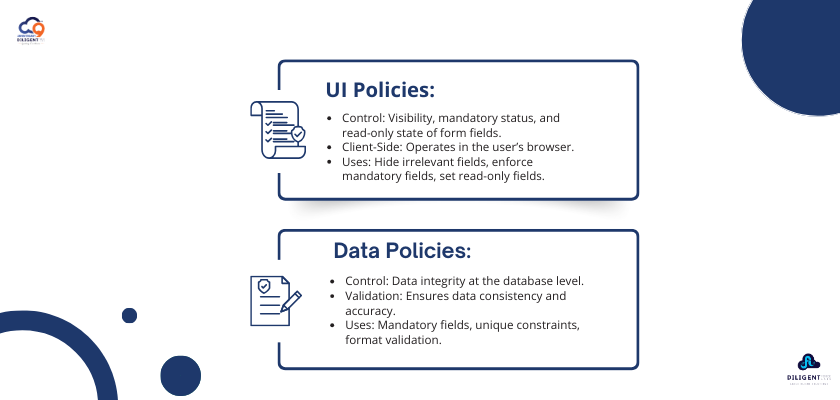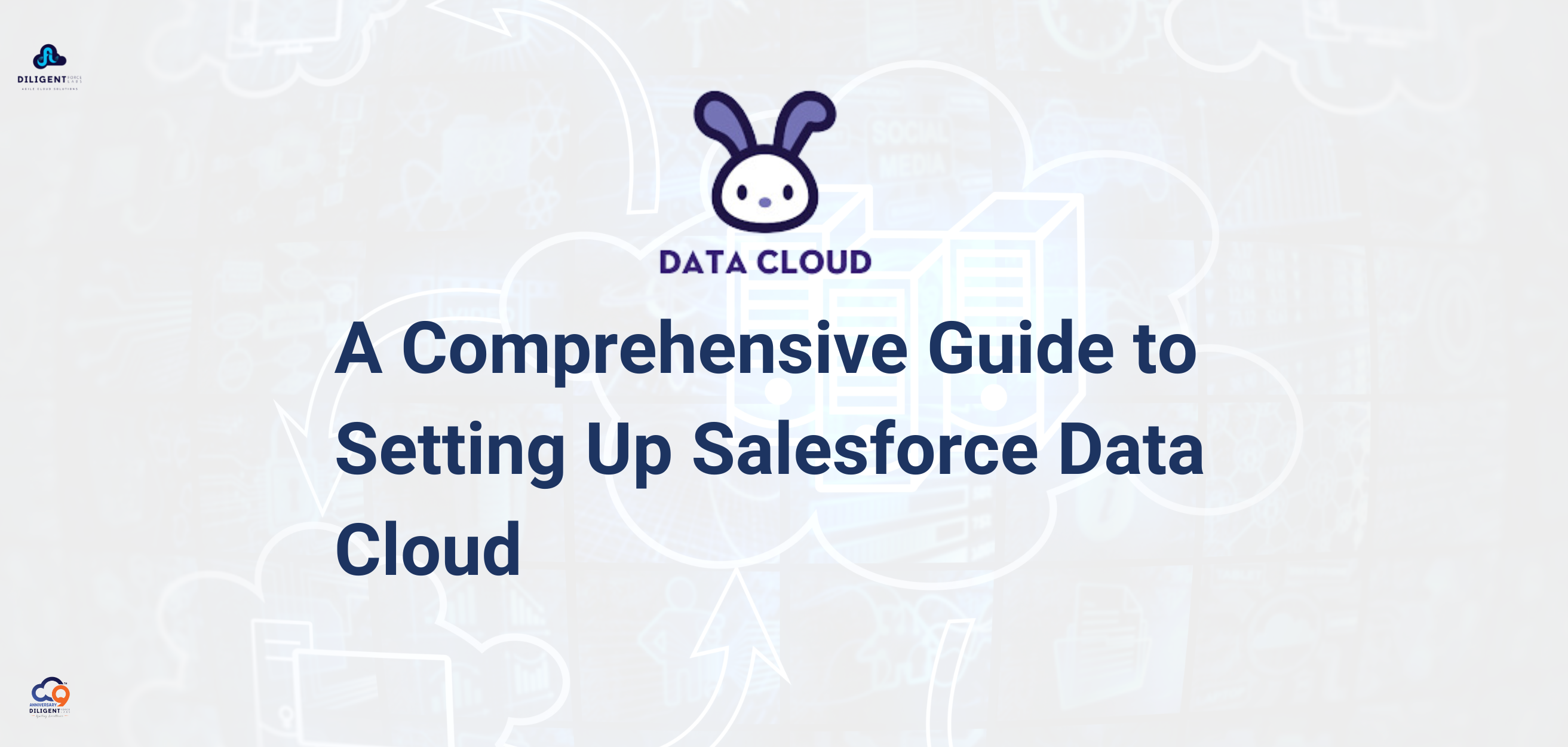UI Policies in ServiceNow enable dynamic control over the visibility, mandatory status, and read-only state of form fields based on specified conditions, enhancing user experience and streamlining business processes. Data Policies provide administrators with a robust mechanism to enforce data integrity and governance rules at the database level, ensuring consistency, accuracy, and compliance across ServiceNow instances.
UI Policies:
UI Policies are a powerful tool used to dynamically control the behavior and appearance of form elements on record forms. They enable administrators and developers to create rules that govern the visibility, mandatory status, and read-only state of fields based on specified conditions. UI Policies operate on the client side, meaning they are evaluated and enforced within the user’s web browser, providing a responsive and interactive user experience. These policies can be applied to any form in the platform, including Incident, Change, or Request forms, allowing organizations to tailor the user interface to their specific business processes and requirements.
Administrators can define conditions using a variety of criteria, such as field values, user roles, or script evaluations. When these conditions are met, the associated actions are triggered, which can include showing or hiding fields, making fields mandatory, or setting fields to read-only. This flexibility enables organizations to implement complex business logic and enforce data integrity rules seamlessly within the ServiceNow platform.
Data Policies:
Data Policies serve as a mechanism to enforce data integrity and governance rules at the database level. They provide administrators with a powerful toolset to define and enforce policies that validate and control the values entered into specific fields on records. Data Policies are typically used to ensure that data conforms to predefined standards, such as format validation, range checks, or adherence to business rules. These policies can be applied to any table and field within the ServiceNow instance, allowing organizations to maintain consistency and accuracy across their data.
Configuring Data Policies involves defining conditions that trigger validation rules, as well as specifying the actions to take when those conditions are met. Administrators can define various types of validation, including mandatory fields, unique value constraints, regular expression pattern matching, and more. When a user attempts to save a record, the Data Policy evaluates the defined conditions and enforces the configured rules accordingly.

Conclusion:
UI Policies and Data Policies in ServiceNow are integral components for customizing and governing the platform’s user interface and data integrity. UI Policies enable dynamic control over form elements, enhancing user experience and guiding interactions, while Data Policies enforce data consistency and accuracy, ensuring adherence to predefined standards and business rules.
What are some common use cases for UI Policies?
UI Policies are commonly used to enforce data entry standards, streamline form interactions, and guide users through workflows. For example, they can dynamically hide irrelevant fields, make certain fields mandatory based on user selections, or set fields to read-only to prevent unwanted changes.
Can Data Policies be customized to suit specific business requirements?
Yes, Data Policies can be customized to meet the unique needs of each organization. Administrators have the flexibility to define custom validation rules and actions based on their specific business processes and data governance policies.
Recent Post

How we can help you!
Contact UsJust Connect With Us!
Our team of certified Salesforce and ServiceNow consultants is standing by to offer answers, ideas and solutions.




